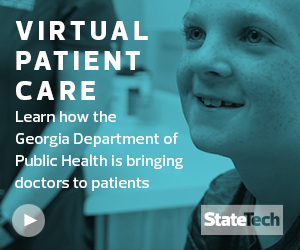While states are still sorting out policies around insurance reimbursements and practice standards related to telehealth, there is nevertheless a growing consensus that the practice is needed to help improve access to care. Around the country, state health organizations see improvements in health trends in places without ready access to specialized care thanks to bridging that divide with telemedicine solutions.
“A lot of what’s driving the policy is concern around provider shortages, particularly in rural areas,” says Kate Blackman, health program group director for the National Conference of State Legislatures. “Generally, the movement we see is toward broadening the types of providers that could be eligible for reimbursement. If there’s any place where I’d say there’s consensus, it’s around enabling broader access.”
MORE FROM STATETECH: Find out how Chattanooga's broadband investment opens the door to telehealth.
How to Effectively Deploy Telehealth Solutions
Building a statewide telehealth network is no small task, and the Georgia Department of Health relies on $2.4 million in annual state funding dedicated to telehealth to maintain the program. The department utilizes a hub-and-spoke model for its network, and it installed dedicated circuits throughout the state to ensure that clinics had the bandwidth necessary to support telehealth solutions.
By 2016, Georgia connected all 159 of its counties via the telehealth network. Today, patients come to county health centers for telehealth visits, where nurses act as the hands, eyes and ears for physicians on the other end of the screen. The department has approximately 40 physicians in its network, with access to 400 more, and it is providing a number of new services, such as dentistry, that the state previously lacked the resources to support.
“We had to do all of it from scratch,” Salgado says. “We adopted a phased approach, district by district, and it took a couple of years.”













